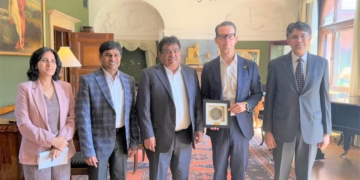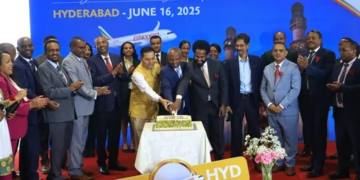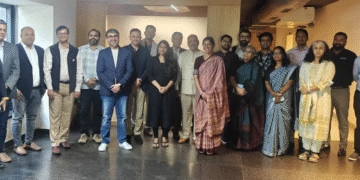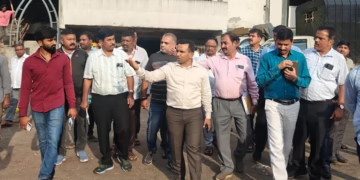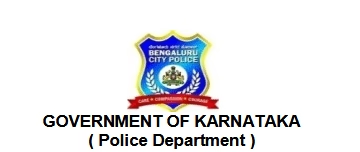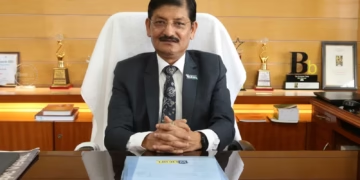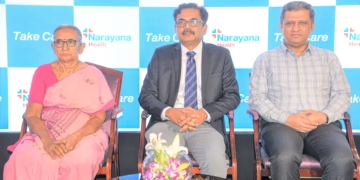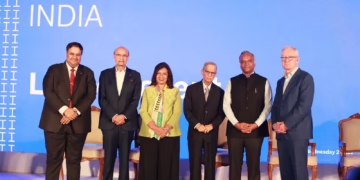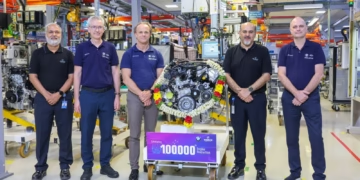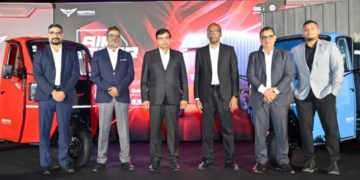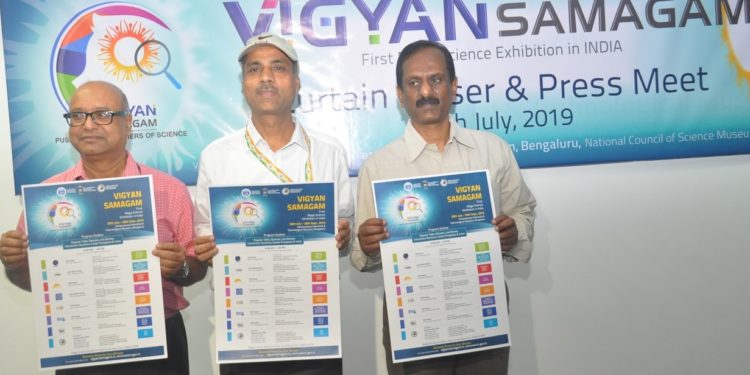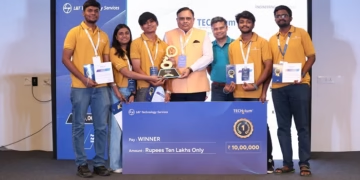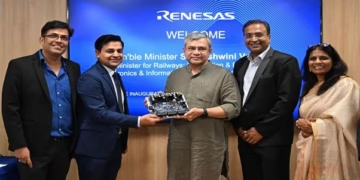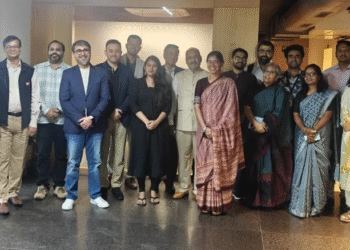~ A two-month long Exhibition to begin at Visvesvaraya Industrial and Technological Museum ~
Bengaluru, July 28, 2019: India’s first-ever Mega Science Exhibition, ‘Vigyan Samagam’, will begin in Bengaluru on July 29th, 2019 at the iconic Visvesvaraya Industrial and Technological Museum. Dr Anil Kakodkar, Member, Atomic Energy Commission & Chairman, Rajiv Gandhi Science and Technology Commission, Mumbai will inaugurate the Exhibition in the gracious presence of Prof Ashutosh Sharma, Secretary, DST, New Delhi, Prof V. S. Ramamurthy, Emeritus Professor, NIAS, Bengaluru and Shri A D Choudhury, Director General, NCSM, Kolkata.
The Department of Atomic Energy (DAE), Department of Science and Technology (DST) and National Council of Science Museums (NCSM), Ministry of Culture, Government of India, are the joint organisers of ‘Vigyan Samagam’. Shri Ranajit Kumar, Head, NCPW, DAE, Dr. Praveer Asthana, Head, Mega-Science Divisions, DST and Mr. Madan Gopal, Director, Visvesvaraya Industrial and Technological Museum jointly announced the programme at a Press Conference in Bengaluru today and explained the objectives and various activities related to ‘Vigyan Samagam’.
As informed by the organizers, all major global Mega Science Projects where India is participating, such as Large Hadron Collider (LHC) at the European Organization for Nuclear Research (CERN), ‘Facility for Antiproton and Ion Research’ (FAIR), ‘India-based Neutrino Observatory’ (INO), ‘International Thermonuclear Experimental Reactor’ (ITER), ‘Laser Interferometer Gravitational – Wave Observatory’ (LIGO), ‘Major Atmospheric Cherenkov Experiments’ (MACE), ‘Square Kilometre Array’ (SKA) and ‘Thirty Meter Telescope’ (TMT) will be exhibited at ‘Vigyan Samagam’. The objective of organising ‘Vigyan Samagam’ is to spread awareness about the exciting world of front–ranking science and technology. The Exhibition will bring together many world-renowned scientists from India and abroad, along with budding scientists, science enthusiasts, students, industry, academia, institutions and people from Bengaluru and the State of Karnataka.
Mr.Ranajit Kumar, said, “Vigyan Samagam is an endeavor to bring Science projects, overlapped with technology, a step closer to the society and highlight the value and impact of fundamental research to a broad cross-section of stakeholders. This Exhibition shall provide a unique science communication platform and create a bridge for further interactions between India and its global peers, bolstering India’s contribution to globally prestigious science projects.”
Dr. Praveer Asthana said, “The exhibition will also aim to connect with school children, students and aspirants who want to pursue fundamental science and research as a strong career option. Talks and sessions with academia and industry will also be the integral part of the event. It will provide a unique platform to all stakeholders for cross-fertilisation of ideas.”
Explaining about the format of the Exhibition, Mr.Madan Gopal said, “The Exhibition will have a number of working models and exhibits, themed-based galleries of posters, informative audio-visual content and electronic displays and interactive kiosks will be setup for each of the Mega Science Projects. A unique exhibition pavilion, developed at CERN, has been specially brought over for Vigyan Samagam and shall be showcased at VITM. Several interesting talks and activities like quiz contests and model making have been planned for the schoolchildren.”
The biggest attraction for the visitors would be to witness how India contributed in global Mega – Science projects where several developed countries have participated collectively. ‘Vigyan Samagam’ will aim at traversing the visitors through the world from micro to macro, unveiling the efforts of the international community in understanding the Universe. It will offer a great opportunity for students and families to understand the workings of the Universe – from discovery of the Higgs particle to that of gravitational waves from merger of neutron stars and black holes and to the origin of the Universe and its evolution through various stages.The inaugural event will be followed by a two-day scientific event comprising of invited talks and lectures by eminent speakers from the field of science, technology and industry. Coinciding with the scientific discussions during the first two days at each venue, industry partners working with the participating Mega Science Project Groups will set-up expo at the venue to showcase their contributions. In its multi-venue journey, after Bengaluru, ‘Vigyan Samagam’ will travel to Kolkata in the period 4th November, 2019 to 31st December, 2019 at Science City. In its final leg, it will reach New Delhi at the National Science Centre from 21st January, 2020 and will close on 20th March, 2020.
Global, Iconic Scientific Organisations to participate:
Vigyan Samagam will have the presence of prestigious organisations such as CERN, FAIR, INO, ITER, LIGO, MACE, SKA and TMT. The audience would also include invited members from various scientific organisations, industry and academia. As part of project awareness activities, each participating Project will be carrying out week-long activities consisting of popular talks, science demonstrations, interactive quiz programmes, etc.
Connecting with School Children, Students: A key objective of Vigyan Samagam:
On the sidelines of the Exhibition, in Bengaluru, a number of activities engaging the curiosity, attention and imagination of school children and students will be taken up. Activities such as quizzes, essay-writing, drawing contests, etc. have been planned by the organisers.
In order to reach out to people at large and get them involved with this Exhibition, ‘Vigyan Samagam’ has launched a website www.vigyansamagam.in where people can get more information about it. Events such as talk shows, lectures planned during the Exhibition will be streamed live through popular social media platforms. The Exhibition will be open on all days including Saturdays, Sundays and Holidays. The timing of the Exhibition will from 10 am to 6 pm.

